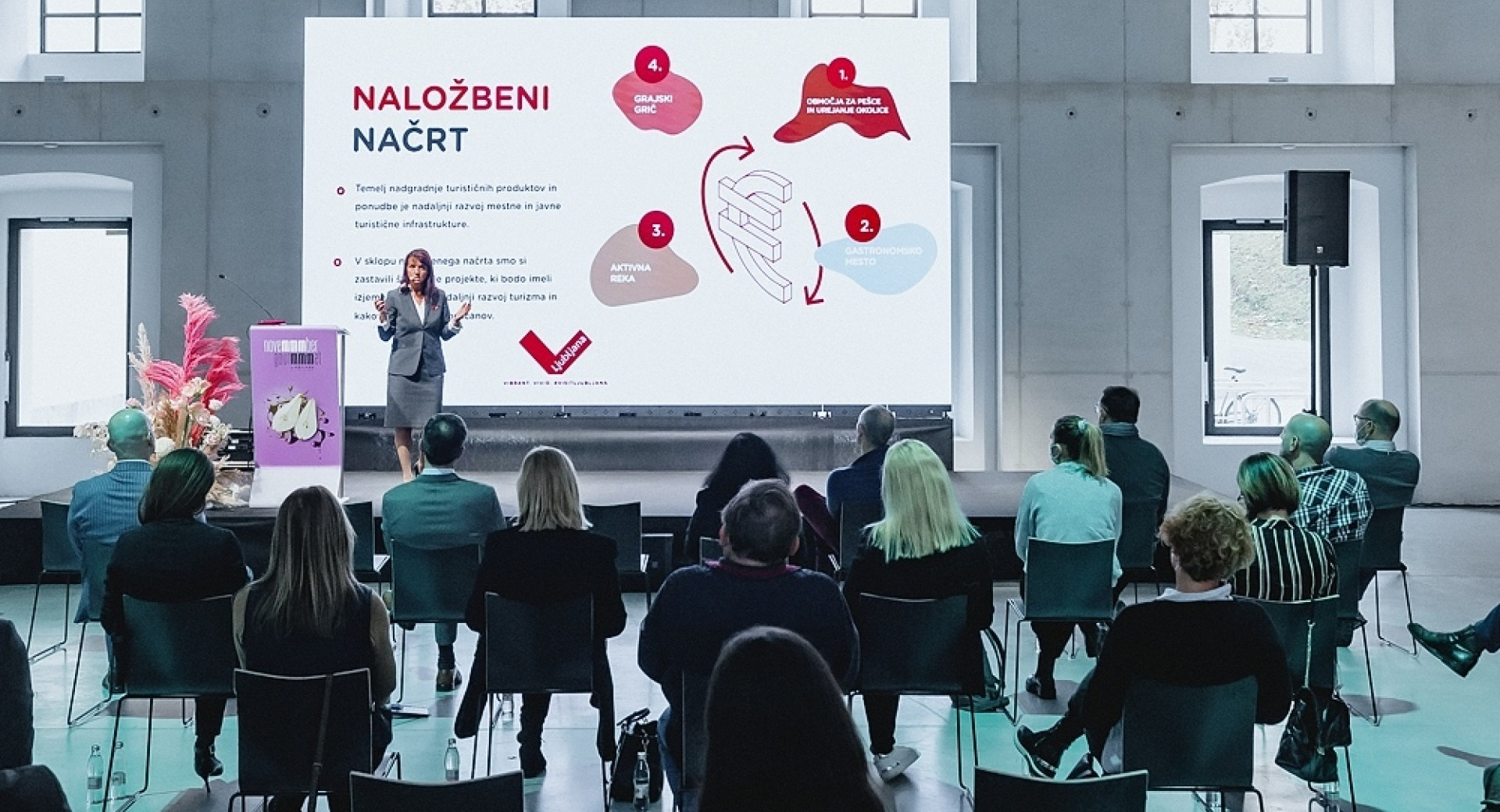Ljubljana Tourism strategic document – making Ljubljana the leading and most creative urban sustainable lifestyle destination in the world
18 Nov 2021
On Monday November 15, 2021 Ljubljana Tourism presented the Tourist Destination Development Strategy for Ljubljana and the Ljubljana Region 2021–2027 to its partners. The strategic document began being planned in July 2019 and was successfully completed in December 2020, when it was officially adopted at a session of the City Council of the City of Ljubljana.

© Nea Culpa
The uniqueness of Ljubljana and vision
With its genuine sustainability and romantic backdrop, Ljubljana offers a refined and enchanting blend of Mediterranean atmosphere, enticing gastronomy and diverse and select year-round experiences for all the senses, nestled in an Alpine environment. The optimal relationship between the size of the city and the number of inhabitants in Ljubljana fosters creativity and allows the successful implementation of creative and innovative concepts in various areas.
Ljubljana will continue to build on its position as a model for urban destinations around the world. As a globally recognised standard in the field of sustainability, Ljubljana will continue to promote and enhance the paradigm of the concept of sustainability and will be a global model in this field.
Goals and how to achieve them
Ljubljana has long been an extremely popular destination for the meetings industry segment. In recent years, thanks to infrastructure and development projects based on the compact nature of the destination and its ease of exploration, architecture and cultural heritage, a pedestrian-friendly city centre and various other elements such as innovative tours and supporting products, the city breaks product has developed strongly in recent years. This will continue to be a key product and an influential driver of tourism demand, especially between June and August and December. Gastronomy was a supporting tourism product in the past, but owing to a number of factors such as the nationwide interest in the development of gastronomy, the use of organic foodstuffs, the country’s first Michelin stars, a general improvement in the gastronomic offering in the destination and growing recognition for it, it should in the future become one of the leading tourism products and a widely recognised element of the tourism offering and the overall destination brand.
Among supporting tourism products in Ljubljana, events have the biggest potential to become a key tourism product in the medium to long term, while culture and sport will continue to play a role as important supporting products in the destination and will be a strong focus of the future development of tourism. In the upcoming strategic period, sport and culture will represent strong supporting products.
So that Ljubljana as a destination can achieve its vision, Ljubljana Tourism set some qualitative and quantitative goals for the strategic period 2021–2027.
The qualitative goals evolve around satisfied local inhabitants and tourists, development and diversification of tourism supply outside the city centre, improved accessibility and sustainable mobility, international recognition and awards and development of an internationally recognised brand. As a city and a tourist destination, Ljubljana is continuing the strong tradition of winning international recognition and awards. An integral part of the future development of the destination will therefore be the development of a brand that will communicate its USPs and desired to position and support future marketing activities.
In order to maintain or improve the current level of satisfaction, implementation of all future development activities in tourism should include consideration of how to keep inhabitants happy and engaged. The tourism sector must become a more important partner in urban planning activities. Improving accessibility, above all by improving railway connections and railway infrastructure must be a focus of the municipal government, with strong support from the national government. At the same time, it will be necessary to continue to promote sustainable mobility within the destination, particularly in the areas of public transport, cycling, environmentally friendly transport, park-and-ride schemes, bus mobility, etc. In order to avoid overcrowding in the city centre, the development of new tourism products must take place in less developed and undervalorised areas of the city. Another opportunity for diversification lies in the more active inclusion of Plečnik’s legacy among the “must-see” attractions of Ljubljana.
The quantitative goals evolve around 14% annual growth in overnight stays, 4% annual increase in average daily expenditure per tourist, extend the length of stay to between 2.5 and 3 nights and increase the number of direct air connections from 9 in 2020 to 25–30 by 2027. Since Ljubljana is a small, boutique urban destination where short city breaks and business tourism are the main tourism products, with its current average length of stay of 2.1 nights it is already more successful than other competing urban destinations. Given the average length of stay, the target set is extremely ambitious: to increase the average length of stay to between 2.5 and 3 nights. This target indicates Ljubljana’s clear orientation towards quality and the development of a tourism offering. With an improved and diverse offering in the destination, significant marketing and promotional efforts, the development of new tourism products and strong synergy among all key stakeholders, both public and private, it will be necessary to increase the number of direct connections to Ljubljana Airport.
